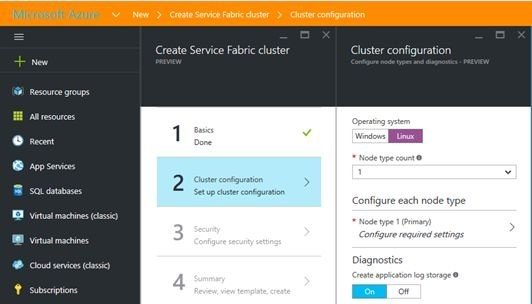Service Fabric makes the work of managing and developing cloud applications simpler. Its deployment is simple and manageable since applications are built and run in small building blocks — known as microservices. Microsoft had earlier introduced Azure Service Fabric somewhere in April 2015, and since then it has become available in preview.

Azure Service Fabric for Linux
It can be regarded as an upgraded or more modern version of the earlier rolled out Windows Azure platform-as-a-service (PaaS) which became available in 2010. The preview of Azure Service Fabric for Windows Server will not only get the cloud powers of Azure into companies’ on-premises data centers but also run workloads on clouds other than Azure and on-premises infrastructure.
The blog post of Microsoft mentions,
At Build 2016, we announced a limited preview of Azure Service Fabric on Linux, which you can use to build, deploy, and manage cloud applications by using the same core technology that Microsoft has used to build massively scalable solutions on Windows. With this preview, you can create Reliable Actors and stateless Reliable Services in Java on top of our runtime. Developers can build apps by using the tools with which they’re familiar, including Yeoman scaffolding, Gradle builds, and Vagrant-based setup. The SDK and runtime also provide support for containers and guest executables, as well as the ability to create and deploy apps to a cluster on Azure or your development computer.
One out of every four Azure virtual machines run Linux today, and the Azure Marketplace offers dozens of community-provided Linux images, so Linux is not a newcomer to Azure. That said, Linux was never accorded any priority for Service Fabric.
Once it was decided to make the technology public, the SDK was made available in preview for use. All it requires is a simple sign up for access. More at the source.
Leave a Reply